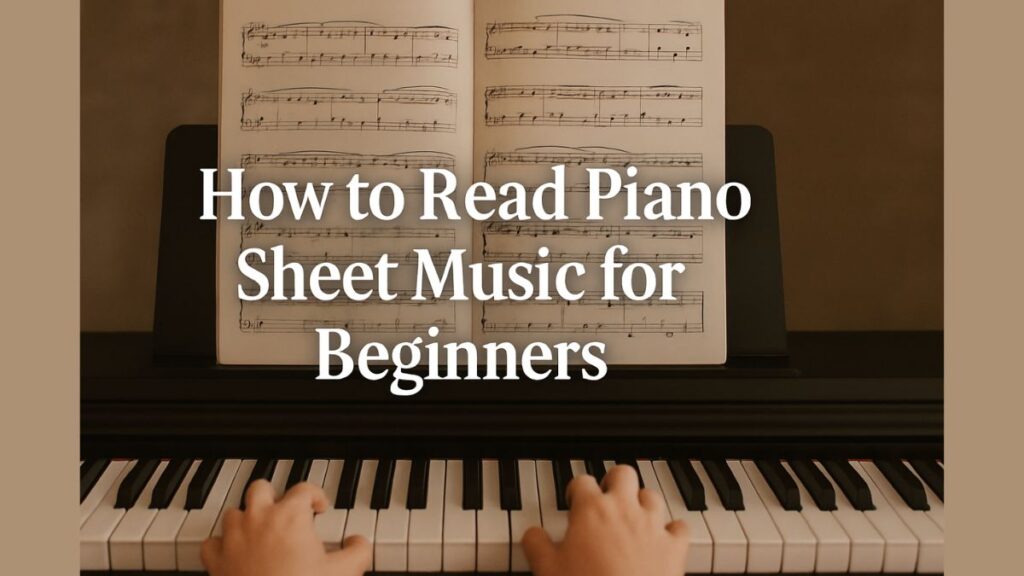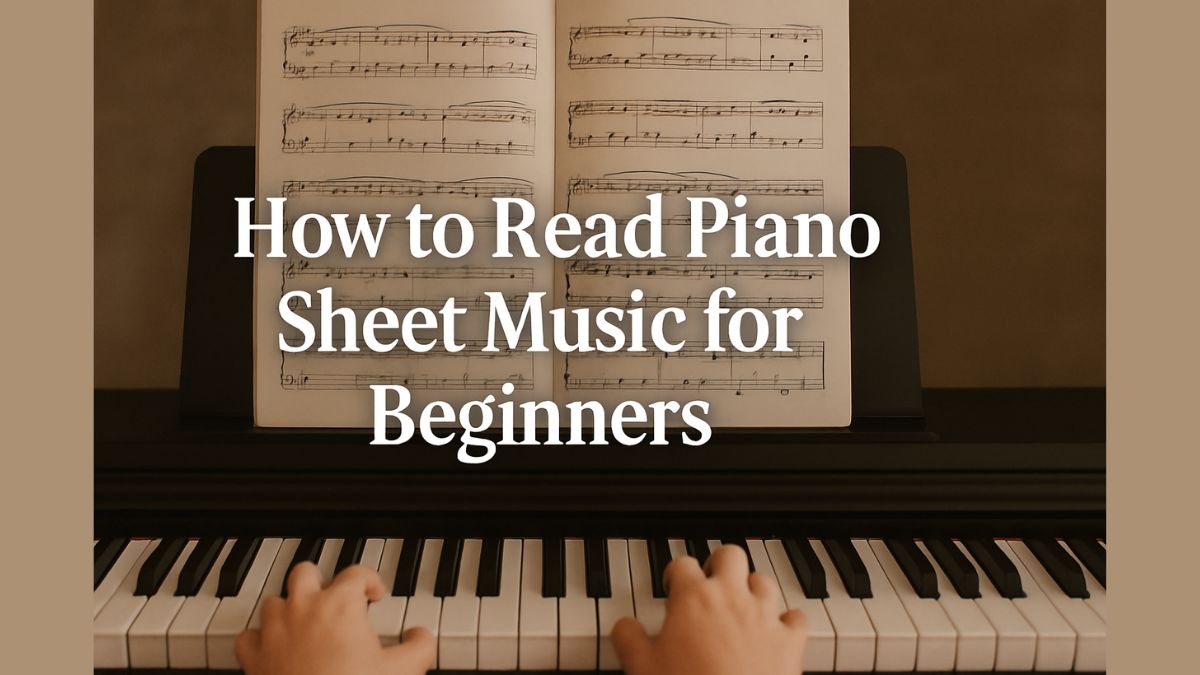Learning to read piano sheet music can feel tricky at first, but it’s totally doable with some practice. This guide is for absolute beginners who want to understand musical notation and start playing piano. We’ll break down the basics, like reading treble and bass clefs, in a way that’s easy to follow. Let’s get started!
Why Learn to Read Piano Sheet Music?
Piano sheet music is like a map that tells you what notes to play and when. Knowing how to read it helps you play songs accurately and opens up tons of music to explore. Whether you’re into pop, classical, or jazz, learning to read piano sheet music is the key to playing what you love.
It’s Easier Than You Think
You don’t need to be a music genius to learn piano sheet music for beginners. With a few simple steps, you’ll start recognizing notes and rhythms. It’s like learning a new language—one note at a time.
Understanding the Staff
The staff is the set of five lines and four spaces where notes are written. Each line and space represents a different note on the piano. To learn to read piano sheet music, you need to know how the staff works for both hands.
Treble Clef for Right Hand
The treble clef, also called the G clef, looks like a curly symbol. It’s used for the right hand and shows higher notes. The lines in the treble clef stand for the notes E, G, B, D, and F. A simple way to remember this is the phrase “Every Good Boy Does Fine.” The spaces spell out F, A, C, and E, which you can think of as the word “FACE.”
Bass Clef for Left Hand
The bass clef, or F clef, is for the left hand and lower notes. It looks like a backward C with two dots. The lines represent G, B, D, F, and A, which you can recall with “Good Boys Do Fine Always.” The spaces are A, C, E, and G, or “All Cows Eat Grass.”
Highlight: Practice saying these phrases daily to memorize the notes on the treble and bass clefs. It makes reading piano sheet music for beginners much faster!
What Are Notes and How Do They Work?
Notes are the circles you see on the staff. They tell you which key to press and how long to hold it. To learn to read piano sheet music, you need to understand note shapes and their timing.
Types of Notes
- Whole Note: Looks like an empty circle and lasts for four beats.
- Half Note: An empty circle with a stem, held for two beats.
- Quarter Note: A filled circle with a stem, played for one beat.
Rests
Rests are silent moments in music. They look different but match the timing of notes. For example, a whole rest means four beats of silence, and a quarter rest is one beat of no playing.
Reading Rhythm and Timing
Rhythm is how long you play each note. The time signature at the start of the sheet music tells you how many beats are in each measure (a small section of music). A common time signature is 4/4, which means four beats per measure.
Highlight: Clap along to a song to feel the rhythm. This helps you understand timing when you learn to read piano sheet music.
Finding Middle C
Middle C is a super important note because it’s right in the center of the piano. On the treble clef, it’s written just below the staff with a short line through it. In the bass clef, it’s just above the staff. Finding Middle C helps you figure out where other notes are.
Practice Tip
Sit at your piano and find Middle C (it’s near the middle of the keyboard). Play it a few times to get used to its sound. This is a great starting point for piano sheet music for beginners.
Sharps, Flats, and Naturals
Sometimes, you’ll see symbols next to notes. These change the pitch slightly:
- Sharp (#): Raises the note by one key (play the next key to the right).
- Flat (b): Lowers the note by one key (play the next key to the left).
- Natural: Cancels a sharp or flat, so you play the regular note.
These symbols help you play songs with more variety and are common when you learn to read piano sheet music.
Putting It All Together
Now that you know the staff, clefs, notes, and rhythms, try playing a simple song. Start with something easy, like “Twinkle Twinkle Little Star.” Look at the sheet music, find Middle C, and follow the notes one by one. Go slow and don’t worry about mistakes—that’s how you learn!
Practice Every Day
Spend 10-15 minutes daily practicing. Try reading a new line of piano sheet music for beginners each day. Over time, you’ll get faster at spotting notes and playing them.
Highlight: Be patient! Reading sheet music feels slow at first, but it gets easier with regular practice.
Common Mistakes to Avoid
When you’re learning to read piano sheet music, it’s easy to make a few slip-ups. Here’s what to watch out for:
- Rushing: Don’t try to play too fast. Go slow to get the notes right.
- Ignoring the Clefs: Always check if a note is in the treble or bass clef.
- Skipping Rests: Rests are just as important as notes, so don’t skip them.
Tools to Help You Learn
There are tons of resources to make learning piano sheet music for beginners easier:
- Apps: Apps like Simply Piano or Flowkey guide you through reading sheet music.
- Free Sheet Music: Websites like Musescore have beginner-friendly songs.
- Flashcards: Use note flashcards to practice recognizing notes quickly.

FAQ About Piano Sheet Music for Beginners
How long does it take to learn to read piano sheet music?
It depends on how much you practice, but most beginners can read simple sheet music in a few weeks with daily practice.
Do I need a piano to learn sheet music?
A piano or keyboard helps, but you can start learning the basics of reading sheet music without one by using apps or flashcards.
What’s the easiest song to play on piano?
Songs like “Twinkle Twinkle Little Star” or “Mary Had a Little Lamb” are great for beginners because they use simple notes and rhythms.
Can I learn piano sheet music online?
Yes! There are lots of free tutorials and apps online to help you learn to read piano sheet music.
Learning to read piano sheet music is a skill that opens up a world of music. Start with the basics like the staff, treble and bass clefs, and simple notes. Practice a little every day, and soon you’ll be playing your favorite songs. Keep it fun, go slow, and enjoy the process of learning piano sheet music for beginners!
Read More at https://instantalertbuzz.in/blog/ and To try your hands on piano online, click here
